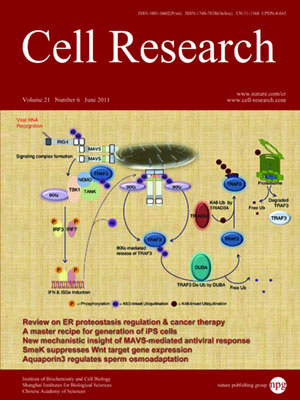
Volume 21, No 6, Jun 2011
ISSN: 1001-0602
EISSN: 1748-7838 2018
impact factor 17.848*
(Clarivate Analytics, 2019)
Volume 21 Issue 6, June 2011: 934-943
ORIGINAL ARTICLES
Ras1CA overexpression in the posterior silk gland improves silk yield
Li Ma1,*, Hanfu Xu2,*, Jinqi Zhu1, Sanyuan Ma2, Yan Liu1, Rong-Jing Jiang1, Qingyou Xia2 and Sheng Li1
1Key Laboratory of Insect Developmental and Evolutionary Biology, Institute of Plant Physiology and Ecology, Shanghai Institutes for Biological Sciences, Chinese Academy of Sciences, Shanghai 200032, China
2Key Sericultural Laboratory of Agricultural Ministry, College of Biotechnology, Southwest University, Chongqing 400715, China
Correspondence: Sheng Li, Qingyou Xia,(shengli@sippe.ac.cn; xiaqy@swu.edu.cn)
Sericulture has been greatly advanced by applying hybrid breeding techniques to the domesticated silkworm,
Bombyx mori, but has reached a plateau during the last decades. For the first time, we report improved silk yield in a GAL4/UAS transgenic silkworm. Overexpression of the
Ras1CA oncogene specifically in the posterior silk gland improved fibroin production and silk yield by 60%, while increasing food consumption by only 20%. Ras activation by
Ras1CA overexpression in the posterior silk gland enhanced phosphorylation levels of Ras downstream effector proteins, up-regulated fibroin mRNA levels, increased total DNA content, and stimulated endoreplication. Moreover, Ras1 activation increased cell and nuclei sizes, enriched subcellular organelles related to protein synthesis, and stimulated ribosome biogenesis for mRNA translation. We conclude that Ras1 activation increases cell size and protein synthesis in the posterior silk gland, leading to silk yield improvement.
Cell Research (2011) 21:934-943. doi:10.1038/cr.2011.36; published online15 March 2011
FULL TEXT | PDF
Browse 2446


